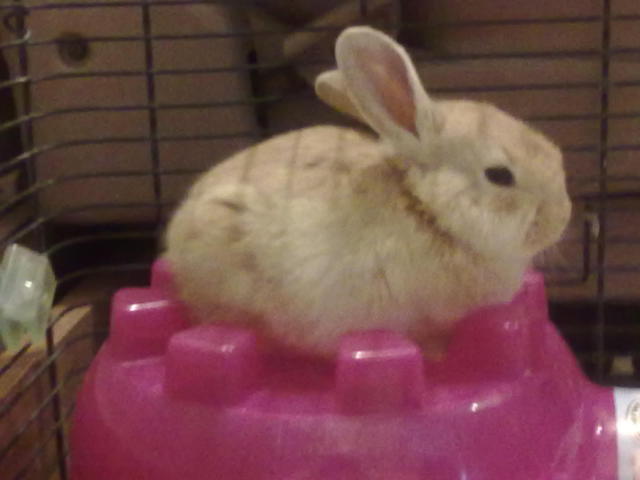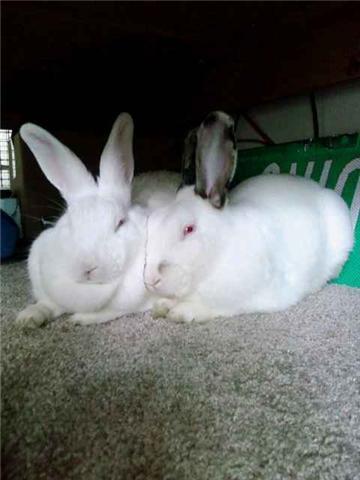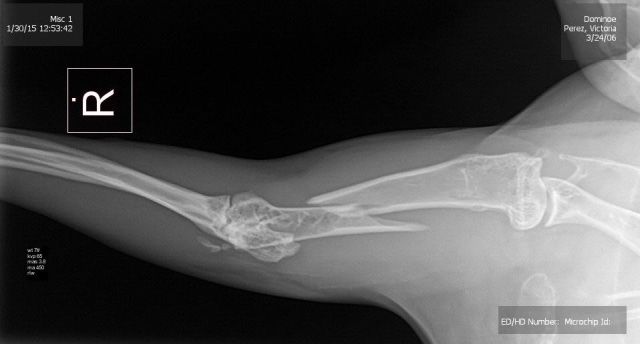QuestionI have a solid brown buck, a broken black & white buck, a solid black doe, a solid chestnut doe. They are free range. The have their litters in their underground warren. I don't get to see the kits till they are big enough to come out and graze.
There are 6 kits. 2 solid black, 1 solid gray, 2 broken brown & white, and 1 broken black & white. I assumed the black doe was the mother because of the 2 black kits and because I saw some of them try to nurse off her.
Last night I happen to have the chestnut doe in the cage with the kits and saw them actually nursing. They stayed upside down under her so I assume they were nursing.
Do kits go after any tit that happens to be close by?
Base on the colors, who's the probable mother?
I do not keep the does in the cage all the time in case there might be other kits in the warren. If I know who's the mother I would try to have her in the cage with the kits more often. It's also possible the kits are from different litters.
This time I'm keeping the kits caged because 5 of 7 kits from a litter 3 months ago disappeared. A neighbor's cat's been hanging around since that first litter.
AnswerI have a solid brown buck, a broken black & white buck, a solid black doe, a solid chestnut doe. They are free range. The have their litters in their underground warren. I don't get to see the kits till they are big enough to come out and graze.
There are 6 kits. 2 solid black, 1 solid gray, 2 broken brown & white, and 1 broken black & white. I assumed the black doe was the mother because of the 2 black kits and because I saw some of them try to nurse off her.
Baby rabbits will often try to nurse off of anything fuzzy. However, if the female is letting them nurse, it is likely that she is the mother. You can turn the mother's over and look for a difference in the belly fur. Mother's will have plucked fur from the belly to line their nest. The mammary glands will also be swollen due to milk production.
It's hard to be sure who the mother is just based on colour for two reasons:
1) There are a a lot of different colours that could qualify as "grey" and "brown". Without knowing the exact colours of the kits and the males, it is hard to tell if any are genetically impossible from one mother or the other. Most likely the litter is sired by both males, meaning one kit could have one father, and another could have the other male as the father.
2) Chestnut is one of the most dominant or strongest colours. It can produce most other colours.
If you can provide me with more information, I can be of better help.
Do they greys have any other colour anywhere? Do they have a white belly, inside of the ears, etc. like the chestnut does? Or are they completely slate grey in colour? Or, are they a light grey with a slight pinkish or purplish cast to them?
If they have markings like the chestnut, they are most likely either opals or chinchillas. Crossed to either black or chestnut, you could get the same colours.
If they have no markings at all, they are either blues or lilacs. If so, they cannot produce any babies with markings like the chestnut. So if they are blue or lilac, and any of the babies have markings like the chestnut, the chestnut has to be the mom.
If NONE of the babies have markings like the chestnut, or if the grey male does have markings like the chestnut, there is no way to tell who is the mother just based on colour. This is because chestnuts can produce babies without markings, as can blacks. So either one could be the mother if there are no babies with those type of markings. If one of the males has those markings, even if the black females was the mom, he could have passed on his markings to the babies. The chestnut female could also pass them onto the babies, so it makes it very difficult to figure out the mother just based on colour.
Looking at the belly of the females would be the most likely way of figuring out who the mom is.

 bunny going bald
Question
Bald bunny
This is my first venture int
bunny going bald
Question
Bald bunny
This is my first venture int
 Squishy
QuestionSquishy, Fluffy Bunny.
QUESTION: My Sist
Squishy
QuestionSquishy, Fluffy Bunny.
QUESTION: My Sist
 Weening off baby rabbits
QuestionWalle and Eva
QUESTION: I have a male ra
Weening off baby rabbits
QuestionWalle and Eva
QUESTION: I have a male ra
 Broken leg on bunny urgent
Question
Xray
Hi Dana I have a bunny with a brok
Broken leg on bunny urgent
Question
Xray
Hi Dana I have a bunny with a brok
 Cancer
Question
kaibi
Hello,
I have a 10 year old rabb
Cancer
Question
kaibi
Hello,
I have a 10 year old rabb